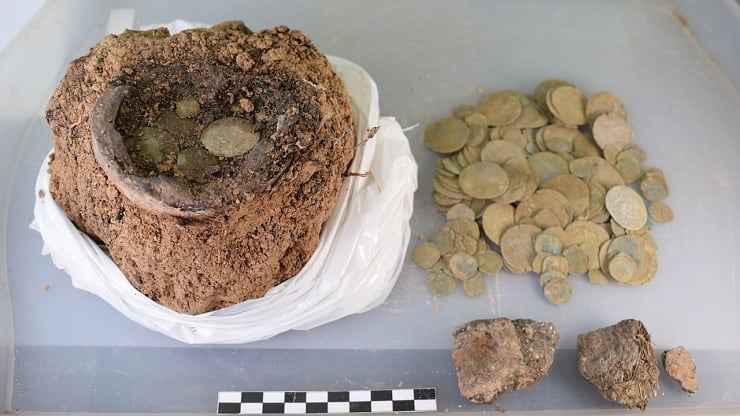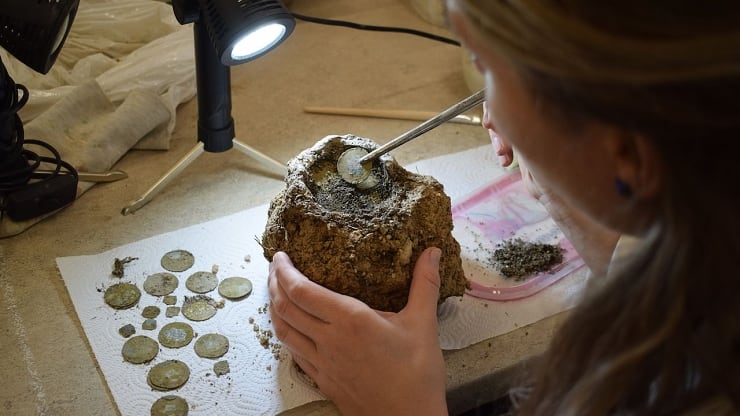Hezký 👍😊
8.4.2020 Rare medieval coins found near Brno
Categories: Finds and rescue research in the Czech Republic , Calendar

Two years ago, a female searcher using a metal detector discovered a treasure near Brno. The depot, stored in a ceramic container, contained 69 groschen from the reign of Wenceslas IV and 205 mostly Viennese pfennigs. The container was buried in the ground with the bottom up.
The treasure was discovered by Jitka Koutníková using a metal detector. She called archaeologists, who came to the site and examined it. Specifically, they were experts from the Institute of Archaeological Heritage Care (ÚAPP) Brno and the Moravian Museum.
"Originally, it measured about ten centimetres in height and was about eight centimetres wide. Today we would probably call it a mug. A total of 69 coins are grosz from the reign of Wenceslas IV, i.e. from the first half of the 15th century, which are characterised by very poor quality, worn mintage," archaeologist Ivan Čižmář explained.
The location where the treasure was found was one of the branches of a trade corridor between two important trade centres. According to archaeologists, the depot is related to this. Who exactly buried the depot and why it was not retrieved has not been established.
During the excavation of the site, archaeologists also found a horseshoe, a knife and a medieval iron fang. However, it is not known what connection these items have with the coin depot. Perhaps, in fact, none at all.
"The discovery site is undoubtedly related to the use of one of the branches of a traditional trade corridor between two important commercial centres. We do not know what dramatic events led to the coins being deposited in the ground, but the reign of Wenceslas IV was a turbulent time, which may have led some to secure their future by hiding their possessions," says Čižmář.
Subsequently, the coins were examined by experts who also preserved them. "During the careful dismantling of the block of clay in the laboratory, the entire torso of the vessel was also finally uncovered. It was part of a small ceramic cup with a broken handle, which was also embedded in the clay with the bottom part of the pot was probably not preserved due to post-depositional processes in the forest environment," the archaeologists added.
Sources: www.uapp.cz, www.novinky.cz

The article is included in categories:



